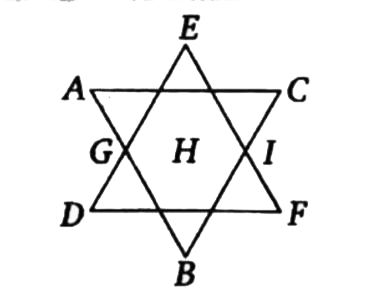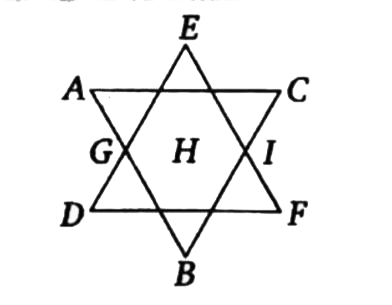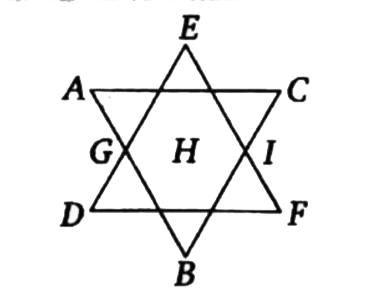
Find the number of non metals in above graph, except noble gas. If A,B,C,E,F,G and H are 2nd period-elements.
5
6
7
8
The correct Answer is:A
C,D,E,F,G
Topper's Solved these Questions
- PERIODIC TABLEBOOK - GRB PUBLICATIONCHAPTER - PERIODIC TABLEEXERCISE - Comprehension 14
1 Video
- PERIODIC TABLEBOOK - GRB PUBLICATIONCHAPTER - PERIODIC TABLEEXERCISE - Comprehension 15
1 Video
- PERIODIC TABLEBOOK - GRB PUBLICATIONCHAPTER - PERIODIC TABLEEXERCISE - Comprehension 12
1 Video
- NOMENCLATURE AND CLASSIFICATIONBOOK - GRB PUBLICATIONCHAPTER - NOMENCLATURE AND CLASSIFICATIONEXERCISE - Subjective Type
24 Videos
- PRACTICAL ORGANIC CHEMISTRYBOOK - GRB PUBLICATIONCHAPTER - PRACTICAL ORGANIC CHEMISTRYEXERCISE - Exercise 4 (Matrix match type )
1 Video
Similar Questions
The table given below shows the mass number and number of neutrons in four elements P, Q< R and S

Which amongst the above elements is a noble gas, an alkali metal and a halogen?
View SolutionAtoms of eight elements A, B, C, D, E, F, G and H have the same number of electronic shells but different number of electrons in their outermost shell. It was found that elements A and G combine to form an ionic compound which can also be extracted from sea water. This compound is added in a small amount to almost all vegetable dishes during cooking. Oxides of elements A and B are basic in nature while those of E and Fare acidic. The oxide of D is almost neutral. Based on the above information, answer the following questions:
(i) To which group or period of the periodic table do the listed elements belong? (ii) What would be the nature of compounds formed by a combination of elements B and F? (iii) Which two of these elements could definitely be metals and which are likely to be non-metals? (iv) Which one of the eight elements is most likely to be found in gaseous state at room temperature? (v) If the number of electrons in the outermost shell of elements C and G be 3 and 7 respectively, write the formula of the compound formed by the combination of C and G. (vi) Which one of the eight elements is likely to be a noble gas? (vii) Which one of the eight elements would have the largest atomic radius? (viii) Which one of these eight elements is likely to be a semi-metal or metalloid?
View Solution
Knowledge Check
Atoms of eight elements A, B, C, D, E, F, G and H have the same number of electronic shells but are different number of electrons in their outermost shells. It was found that elements A and G combine to form an ionic compound which can also be extracted from sea water. Oxides of the elements A and B are basic in nature while those of E and F are acidic. The oxide of elements D is almost neutral.
Which two elements amongst these are likely to be the non-metals ?AA and GBD and FCE and FDA and B
There are nine elements A to I. these are belongs to p-block element other than halogen. If atomic number of B is average of atomic number of A and C and atomic number of E is average of atomic number of D and F and atomic number of H is average of atomic number of G and I. atomic numbers of B, E and H are 7,15 and 83 respectively and atomic numbers of C, I and F are greater than A, G and D respectively.
Q. The incorrect order is:AF>E: Second ionisation energyBB>C: Zeff on valence shellCI>H: First ionisation energyDC>F>E, Electronegativity
There are nine elements A to I. these are belongs to p-block element other than halogen. If atomic number of B is average of atomic number of A and C and atomic number of E is average of atomic number of D and F and atomic number of H is average of atomic number of G and I. atomic numbers of B, E and H are 7,15 and 83 respectively and atomic numbers of C, I and F are greater than A, G and D respectively.
Q. Which of the following statement is incorrect?AB2C5 is acidic in natureBAC2 is acidic in natureCFC3 is basic in natureDGC2 is amphoteric in nature
Rohan was told that six elements A,B, C,D,E and F have atomic numbers of 2,12,20,18,4 and 10 respectively (where A,B,C,D,E and F are not the chemical symbols of these elements). Based on this information, Rohan was asked to answer the following questions:
(a) Which of these elements belong to the same groups of the periodic table? Why?
(b) Which of these element belong tothe same periods of the periodic table? Why?
(c) Which of these elements are (i) metals, and (ii) non-metals?
(d) Which of these elements are chemically (i) reactive and (ii) unreactive?
(e) What values are displayed by Rohan in answering the above questions?
View SolutionWrite the name and deduce the atomic numbers of the following atoms :
(i) The third alkali metal.
(ii) Second transition element.
(iii) The fourth noble gas.
(iv) Fourth element in the second period.
View Solution
There are nine elements A to I. these are belongs to p-block element other than halogen. If atomic number of B is average of atomic number of A and C and atomic number of E is average of atomic number of D and F and atomic number of H is average of atomic number of G and I. atomic numbers of B, E and H are 7,15 and 83 respectively and atomic numbers of C, I and F are greater than A, G and D respectively.
Q. The correct statement is:
View SolutionAtoms of eight elements A, B, C, D, E, F, G and H have the same number of electronic shells but are different in their outermost shells. It was found that elements A and G combine to form an ionic compound which can also be extracted from sea water. Oxides of the elements A and B are basic in nature while those of E and F are acidic. The oxide of elements D is almost neutral.
Which one of the following elements is likely to be a noble gas?
View SolutionAtoms of eight elements A, B, C, D, E, F, G and H have the same number of electronic shells but are different in their outermost shells. It was found that elements A and G combine to form an ionic compound which can also be extracted from sea water. Oxides of the elements A and B are basic in nature while those of E and F are acidic. The oxide of element D is almost neutral.
To which group or period of the periodic table do the elements A and B belong?
View Solution